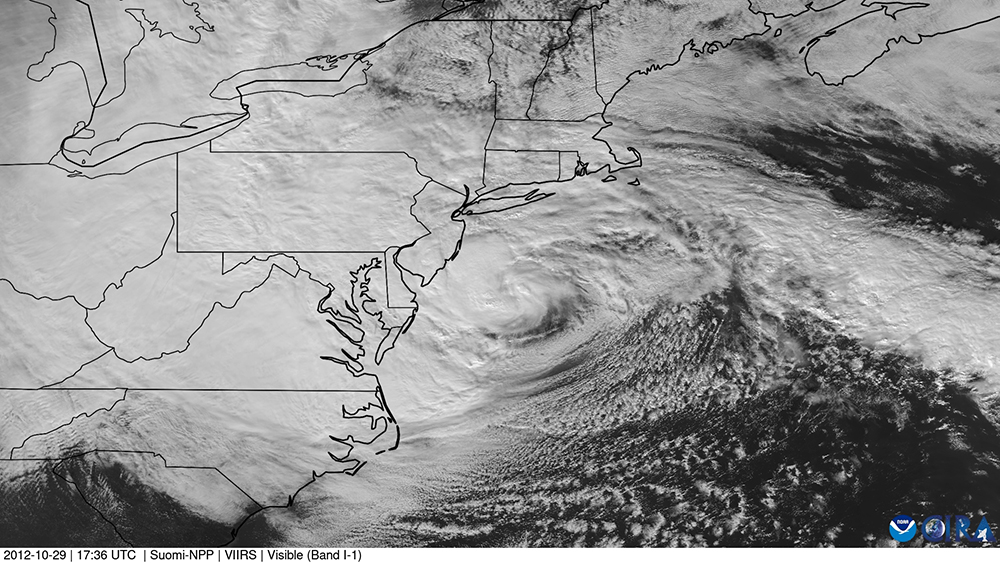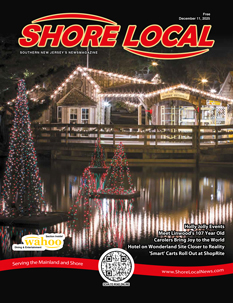By Meteorologist Joe Martucci
I flipped through the Bulletin of the American Meteorological Society (BAMS) last week. It’s our big trade magazine. Among announcements of future conferences and photos of research meteorologists out in nature, was a journal article titled, “Tropical Cyclones and Climate Change.” Given that we live in a hurricane-prone area, I read it.
Author of the paper Stephen Jewson, from Lambda Climate Research in London, shows that landfalling hurricanes have and will be impacted by climate change differently than hurricanes in general.
“The commonly heard phrase, ‘hurricanes are projected to be less frequent, but more intense,’ is somewhat unhelpful,” Jewson writes.
As the Earth gets a little warmer, about 2 degrees Celsius hotter than it is now, Jewson says the frequency of landfalling hurricanes increases. Specifically, we see a 25 percent increase in the biggest, scariest hurricanes – the ones called Category 5. On the other hand, the smaller, less intense tropical storms, which have winds from 39 to 74 mph, would not happen as often.
This is important because it’s not just any study about climate change and hurricanes. Jewson looked at the storms that affect us directly; the ones that hit land. It’s also worth noting that the Earth has already warmed up by about 1.62 degrees Celsius from 1917 to 2023, according to the National Oceanic and Atmospheric Administration. These changes are already happening.
“For instance, there are previously published results that suggest the frequency of hurricanes may decrease. After conversion to landfall, however, the same results suggest that the frequency of hurricanes may increase,” Jewson says.
Even though New Jersey hasn’t technically had a landfalling hurricane since the Vagabond hurricane of 1903, Superstorm Sandy, which lost its hurricane status just before making landfall, is still fresh in many people’s minds. Tropical Storm Fay was also at sub hurricane status when it made landfall near Brigantine in 2020.
Here is a rough breakdown of how much more or less likely tropical storms and hurricanes would be on the North American East Coast, which includes us, with a 2 degree increase in temperatures.
Tropical Storms:
20 percent less frequent
Category 1 Hurricanes:
No change
Category 2 Hurricanes:
10 percent more frequent
Category 3 Hurricanes:
15 percent more frequent
Category 4 Hurricanes:
20 percent more frequent
Category 5 Hurricanes:
25 percent more frequent
This is just my professional opinion, but these changes actually are more good than bad for New Jersey. There’s a 1 percent chance of a Category 3, 4 or 5 hurricane making landfall, or being within 50 miles of landfalling in any given year, according to Colorado State University.
Even a 25 percent increase on top of that still means it’s very unlikely we’re getting hit by a storm of that magnitude. For context, our last landfalling hurricane that strong was Sept. 3, 1821, says David Ludlum, who founded WeatherWise magazine.
Tropical storms are more of what we see, with a 23 percent annual occurrence, according to Colorado State. So a decrease there would be welcomed. Remember, too, that Colorado State University considers decades of data, so the latest Jewson research is already partially baked into what the university’s data says.
You always have to be ready for trouble from the ocean. Jim Eberwine, retired National Weather Service meteorologist and current Absecon emergency manager, says we’re in a year-round hurricane season. After hurricane season ends on Nov. 30, we get into nor’easter season. That’s when we can still get big waves and flooding, just like with hurricanes.
Joe earned his Meteorology Degree from Rutgers University. He is approved by the American Meteorological Society as a Certified Broadcast Meteorologist and Certified Digital Meteorologist, the only one in the state with both. He’s won 10 New Jersey Press Association Awards. You can find him on social media @joemartwx

















